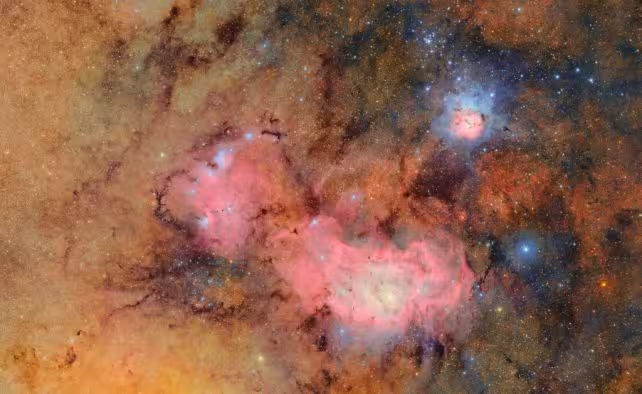4 Minutes
Groundbreaking First Light: Rubin Observatory Reveals the Universe in Unprecedented Detail
The Vera C. Rubin Observatory has officially entered an exciting new era of astronomy by releasing its very first images, offering a spectacular glimpse into the cosmos through the lens of the world’s most powerful astronomical camera. Situated in Chile and operated jointly by the US National Science Foundation (NSF) and the Department of Energy (DOE), this next-generation facility is poised to dramatically expand our understanding of the Universe by capturing celestial phenomena at a scale and fidelity never before possible.
Astronomical Engineering Feat: The Legacy Survey of Space and Time (LSST)
Spanning ten years, the Rubin Observatory’s flagship initiative—the Legacy Survey of Space and Time (LSST)—aims to chart the southern night sky in extraordinary detail. Every few nights, the observatory’s massive 3,200-megapixel camera, the largest digital camera ever constructed for telescope use, will image the entire sky repeatedly, each location observed approximately 800 times over a decade. The camera operates across an impressive range of wavelengths, including near-ultraviolet, optical, and near-infrared, enabling it to record everything from subtle stellar changes to rapidly moving objects.
This immense data collection effort is intended to generate a 10-year timelapse of the universe, tracking objects and events that move, flash, pulse, or evolve. This encompasses the detection and monitoring of asteroids, comets, supernovae, pulsars, and more—extending from cataloguing asteroid populations within our Solar System to recording the explosions of distant stars billions of light-years away.

Revealing First Observations: Nebulae, Galaxies, and Newly Found Asteroids
In one of its debut observations, the Rubin Observatory snapped an extraordinarily detailed image of the Milky Way's Trifid and Lagoon nebulae. These massive molecular clouds serve as prolific stellar nurseries, where new stars are actively forming. The camera collected a mosaic of 678 individual exposures over 7.2 hours, producing a nearly 5-gigapixel image. Interactive versions of these mosaics allow viewers to zoom in and explore intricate structures that were previously hidden from view.
Another milestone image zeroes in on a segment of the sky near the Virgo Cluster, unveiling approximately 10 million galaxies packed into a tightly framed region. These high-resolution, zoomable images highlight the observatory’s capability to fathom the vast landscape of galaxy clusters and extragalactic phenomena.
In a major contribution to planetary defense, the Rubin Observatory’s first data sweep also identified 2,104 previously undetected asteroids within just over 10 hours of sky-watching—dwarfing the annual asteroid discoveries made by all other ground-based observatories combined. While none of these newly found asteroids present a collision risk to Earth, the observatory’s prowess demonstrates its enormous potential for early hazardous asteroid detection and Solar System inventory.
Transforming Our Understanding of Cosmic Mysteries
Experts, including Brian Stone, acting director of the NSF, are calling the Rubin Observatory a game-changer. "The NSF-DOE Rubin Observatory will capture more information about our Universe than all optical telescopes throughout history combined," Stone remarked. The observatory’s unique capabilities—its advanced mirror architecture, ultrasensitive detector array, high-speed telescope movement, and robust computational infrastructure—represent a transformative leap in astronomical instrumentation.
The data harvested by the Rubin Observatory will enable researchers to investigate some of the most profound questions in cosmology, such as the nature of dark matter and dark energy, while providing resources to explore scientific mysteries yet to be imagined. Its mission is not only to document the evolution of the Universe but also to inspire new discoveries for generations to come.
Conclusion
The first images from the Vera C. Rubin Observatory mark a pivotal achievement in astronomical observation, showcasing the extraordinary capabilities of its record-breaking camera system. By delivering vast, detailed, and dynamic portraits of the cosmos—ranging from newborn stars to distant galaxies and newfound asteroids—the observatory sets the stage for unprecedented discoveries. As the LSST continues, it promises to transform our view of the universe, tackling cosmic mysteries and deepening our scientific understanding in ways that were once unimaginable.
Source: sciencealert



Comments